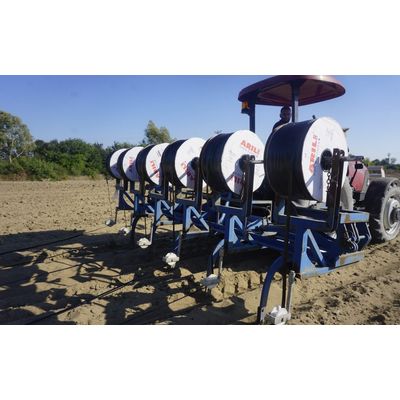

- Home
- Companies
- Arılı Plastik Sanayii A.Ş.
- Products
- Arili - Drip Irrigation Systems

Arili - Drip Irrigation Systems
With drip irrigation, you can maximize your efficiency and minimize your expenses. Drip irrigation is the most effective and accurate method for watering row plants. Especially in unsloping, flat land conditions and arid climates, drip irrigation plays a very important role in ensuring plant growth at the most optimum quality. With drip irrigation, the water and water-soluble nutrients required for plant growth are delivered to the plant root area in controlled drops at the desired time and in the desired amount. Apply small amounts of irrigation water at frequent intervals. Irrigation begins before soil moisture disappears. The plant is given enough water to meet its daily or several-day water needs. Thus, no tension, in other words water stress, is created in the grown plant due to lack of moisture in the soil or excessive moisture.
With the drip irrigation method, sufficient water is supplied only to the area that will allow the plant roots to develop. In this way, high efficiency and quality products are obtained from the plant, which enables its development better, and the growth of harmful weeds in the environment is prevented.
Arili Drip Irrigation Systems
Arili flat drip irrigation pipes are produced in 17mm, 22mm and 25mm diameters. All kinds of dripper spacings are available between 10 cm and 100 cm, depending on the row spacing of the plants to be grown. (10-15-20-25-30-33-40-50-60-75-100cm)
High uniformity is achieved thanks to its special design and drippers with the highest production technology. Dripper flow rates, which have wide channels and are extremely resistant to clogging, are produced as 0.8 - 1.0 - 1.6 - 2.2 - 2.6 and 3.2 lt/s.
Flat drip irrigation pipes in different wall thicknesses are available in our portfolio to allow annual or perennial use (05-06-08-10-12-15-18-24-36 mil).
- Provides effective and economical water use
- More area is irrigated efficiently with less water
- Salinization of the soil is prevented
- The plant is given as much water as it needs.
- Weed growth is reduced due to lack of irrigation between plant rows.
- In places where the ground water is high, irrigation is done without raising the ground water level.
- Irrigation can be done on sloping lands without causing erosion
- Very easy to set up, assemble and store
- In-field operations and harvesting can be done during or immediately after irrigation.
- Saves on pesticides, fertilizers and labor
- Provides increased efficiency and quality in agricultural products
